INTRODUCTION
I have to be frank that I do not really want to issue this type of simple home recipe..One reader PM me asking me if i have porridge recipe.. After pondering a while, i have decided to issue a porridge recipe which is commonly sold in the stores and I hope it will benefit those readers who are really in need of such recipes..
This recipe is rather famous with minced meat and century egg as 2 main ingredients. It is very commonly sold in Hong Kong Porridge stores and obviously is a famous Cantonese cuisines. As per Wikipedia:
“Century egg or pidan (Chinese: 皮蛋; pinyin: pídàn), also known as preserved egg, hundred-year egg, thousand-year egg,thousand-year-old egg, and millennium egg, is a Chinese delicacy made by preserving duck, chicken or quail eggs in a mixture ofclay, ash, salt, quicklime, and rice hulls for several weeks to several months, depending on the method of processing. Some Chinese households cut them up into small chunks and cook them with rice porridge to create “century egg and lean pork congee” (Chinese: 皮蛋瘦肉粥; pinyin: pídàn shòuròu zhōu). This is sometimes served in dim sum restaurants. Rice congee, lean pork, and century egg are the main ingredients. Peeled century eggs are cut into quarters or eighths and simmered with the seasoned marinated lean slivers of pork until both ingredients are cooked into the rice congee. Fried dough sticks known as youtiao are commonly eaten with century egg congee.” (Source: https://en.wikipedia.org/wiki/Century_egg)
Cooking porridge is nothing more than boiling raw rice in water and water quantities used is usually more than the rice quantities. As a guideline, one cup of rice needs one cup of water, therefore, for porridge or congee, it is one cup of rice may requires 3-4 cups of water depending on how fluid you want your porridge to be.
Boiling porridge is simple and the challenge is to boil the porridge as fast as possible and as mushy as it can..There are many ways of boiling porridge and I believed most households will have their own ways of boiling the porridge.. Some said that freeze the washed raw rice in the freezer and it took 1o minutes to boil into very fine and mushy porridge. Some said put a porcelain spoon in the process of boiling. There is no right and wrong, how about blending your rice becoming the porridge like those prepared to nurse the baby? What about pressure cooking the rice and I can guarantee that within 15 minutes, the porridge is like those sold in the store..
What I am sharing is what I usually did for my family.. It is not my mother’s way of preparation as there is no such kitchen gadget available. This recipe shall be for your reference and you can always refer to the aforementioned paragraph for better porridge preparation.
My rice cooker has a quick cook function facilitating busy parents who have no time to prepare the rice. It took about 10-15 minutes to cook the rice. While cooking the rice, using this 10-15 minutes, I started to boil the meat broth for the porridge, by the time the rice is ready, dump in and boil for another 10-15 minutes, the thick mushy porridge is ready.. It is rather fast and easy too. .
WHAT IS REQUIRED
Servings : 3-4 adults
-
1 cup of cooked rice
-
4-5 cups of plain water
-
100 grams of minced meat
-
3-4 pork ribs (optional)
-
2-3 sprigs of spring onion
-
4 cm young ginger
-
1-2 century egg
-
1 tablespoon of sesame oil or cooking oil
-
Pinches of salt
-
Dashes of white pepper
-
1 Chinese cullers (youtiao) (optional)
STEPS OF PREPARATION
-
Shred the ginger until fine , chopped the spring onion and cut the century egg until fine pieces. Set aside.
-
Cook the rice using rice cooker using “QUICK COOK” function if available. Once it done, add the sesame oil and pinches of salt, stir until well mixed.
-
While the rice is cooking, have a pot of water, boil the pork ribs for as long as you can affordable. Pork rib is optional and serve the role of taste enhancing. For this illustration, I have boiled for about 15 minutes. Blanch the minced meat using the same pot of water and dish out the blanched minced meat.
-
Add the cooked rice and use high heat, without lids on, boil for another 10 minutes. Occasionally give it a quick stir. After 10 minutes, add the blanched minced meat, ginger and century egg, let it simmer for another 5-10 minutes or until your desired texture. In this 5-10 minutes, constant stirring is required to avoid the porridge stick to the bottom of the pot. While doing the stirring, you may want to use the big spoon to “grind” the porridge also.
-
Before off the heat, taste the porridge, add additional seasoning such as sesame oil, mushroom concentrate or salt. Stir until well combined. Let the porridge rest in the pot for another 10 minutes before serving. Add additional water if necessary. Add you tiao and dust with additional chopped century eggs, white pepper, sesame oil and chopped onion before serving.
Notes:
-
There should not be a fixed and fast recipe for cooking porridge or congee. Variations are many, you can always add or delete certain ingredients or increase or reduce the quantities stated.
-
When preparing porridge, never ever put on the lid of the pot. Always open the lid to avoid over flow.
-
For the first 10 minutes, no stirring is required, stirring is only required at the last 5-10 minutes.
-
If porridge too dry, add more water. If too watery, boil longer. Even when you stop cooking, cooked rice will continue absorb the water and expand. Less water will expedite the process. But you have to gradually add water for the cooked rice to absorb.
-
New rice and old rice will have different water absorbing properties. Jasmine and basmati rice will have different water absorbing properties too. Always refer to the rice packaging for a rough guideline. Chef discretion is needed in the preparation. If you are unsure, add water cautiously and gradually ..
-
If by the end of cooking, the rice is still grainy, use the big spoon to grind it slightly, it will help to turn mushy.
-
I always planned in advance. If I want to cook congee on the next day, I will cook extra rice for dinner tonight. I always used leftover rice to boil porridge.
-
If you have kids, you may want to consider not adding century eggs to the porridge. You can only add the eggs during serving.
-
The same method can be used to cook shredded chicken. As for fish porridge, add the fish slices 5 minutes before you off the heat and the fish have to be sliced a bit thicker and preferably coat with some corn flour.
CONCLUSION
As what I said before, there are million ways of cooking porridge. Each dialect will have different expectations on their porridge. Like Teochew, they may prefer the watery grainy type of porridge. This recipe is a traditional Cantonese style that is commonly served in Hong Kong porridge stores.. Whatever method you used, as long as you can get what you desired, it is considered as the correct method. I seriously hope that this post will give inspiration to new house chefs who are struggling to cook porridges.
Hope you like the post to day. Cheers and have a nice day.
-
For more recipes, you can refer to my RECIPE INDEX (updated as at 13 March 2015) here and you can follow me at PINTEREST or visit the blog’s FACEBOOK PAGE to keep abreast of my future posts. Also follow me at INSTAGRAM or TSU, a new social network for some more personal sharing other than recipes.
-
You can also join the FOOD BLOGGERS AND FOODIES UNITED FACEBOOK GROUP and FOOD PARADISE 美食天堂 to see more recipes. I am posting my daily home cooked food in the above Facebook Group daily. I would be more than happy if you can post in the Group for the recipes that you tried from my blog.
-
If you are a Pinterest user and you are interested to have more recipes, you can join or follow this Pinterest Board set up by me where there are more than 2600 recipes worldwide and pinned by various bloggers: FOOD BLOGGERS AND FOODIES UNITED PINTEREST BOARD.
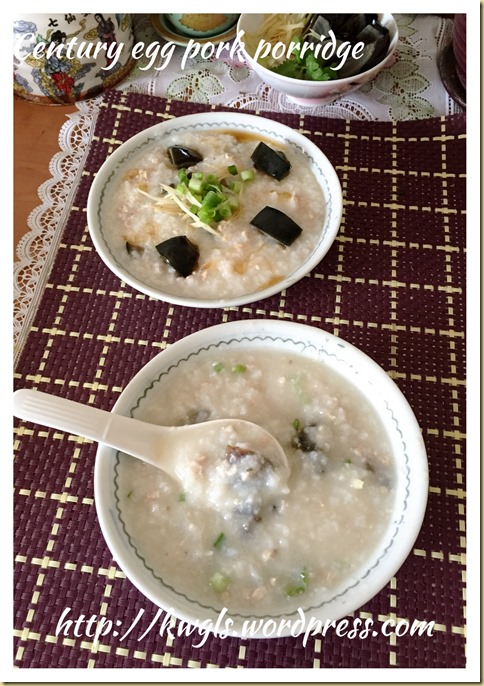
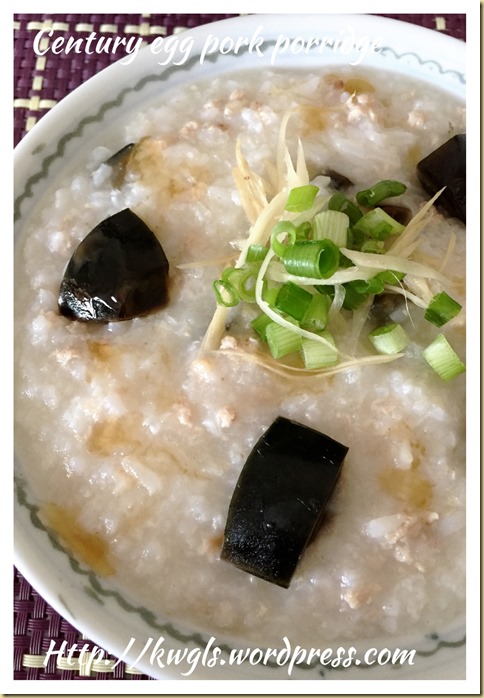
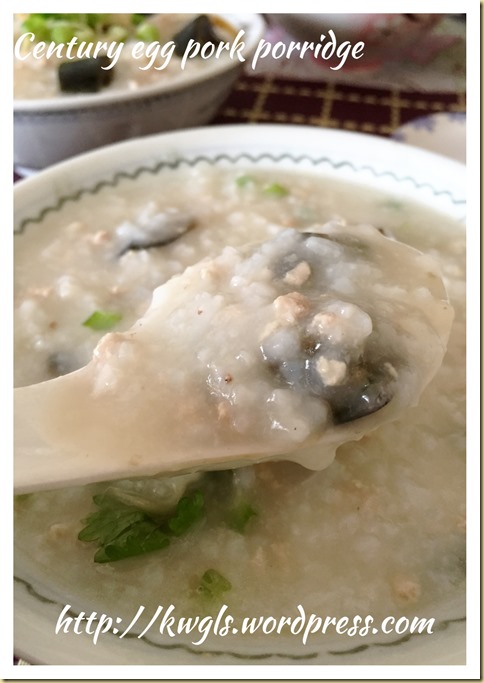
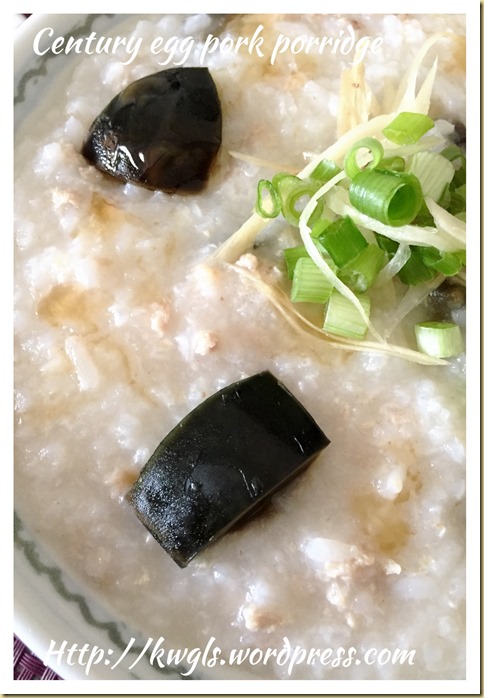

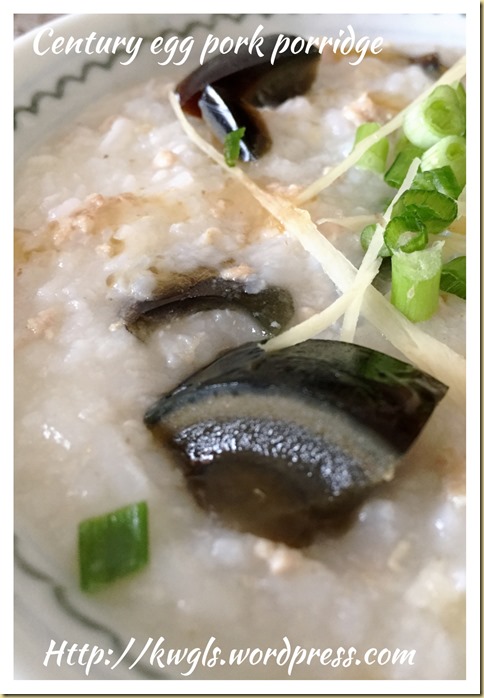
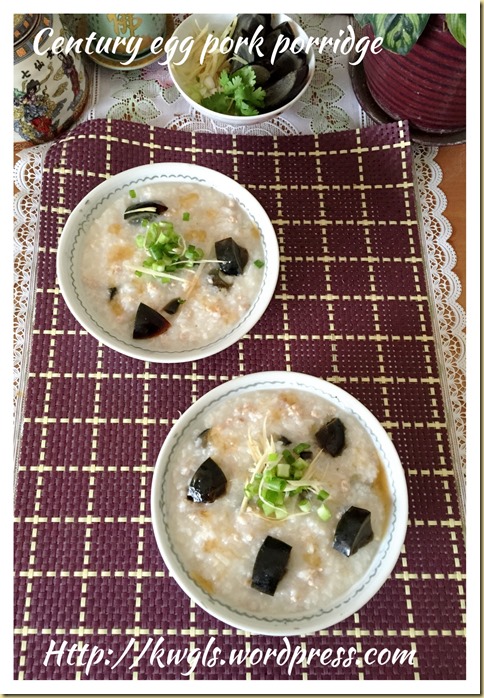

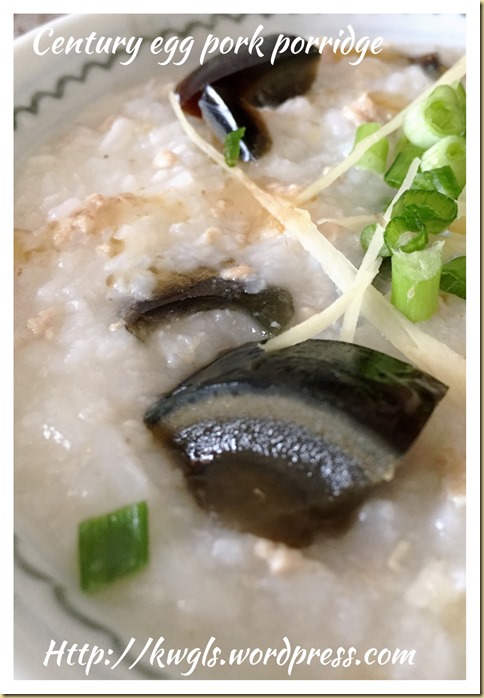
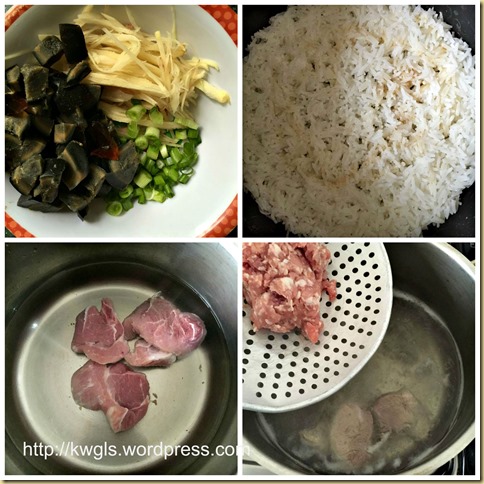
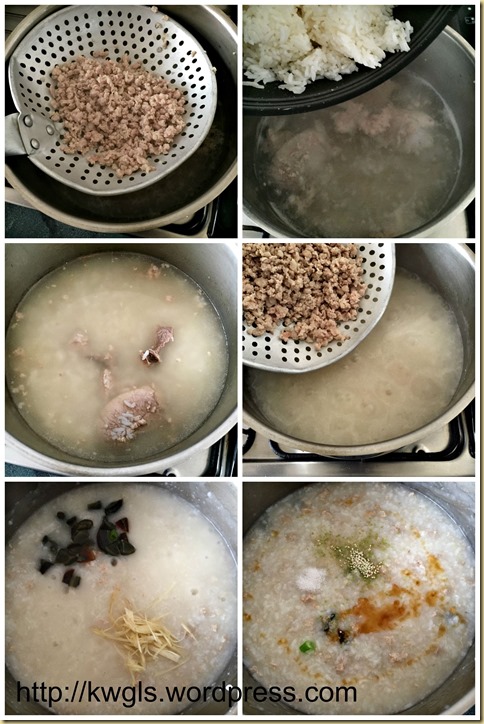
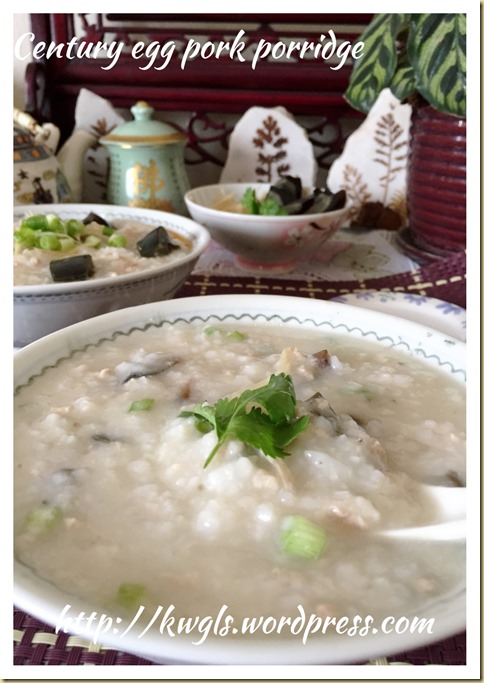
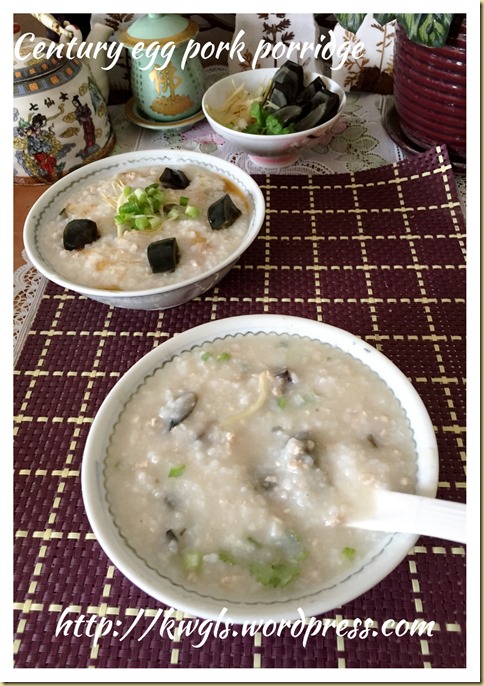
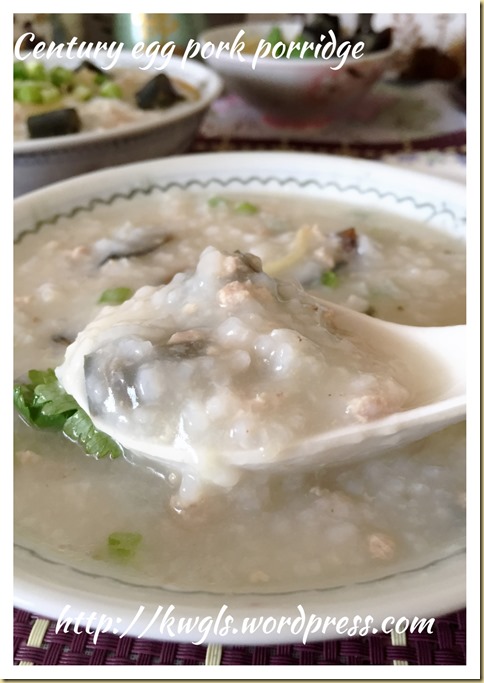
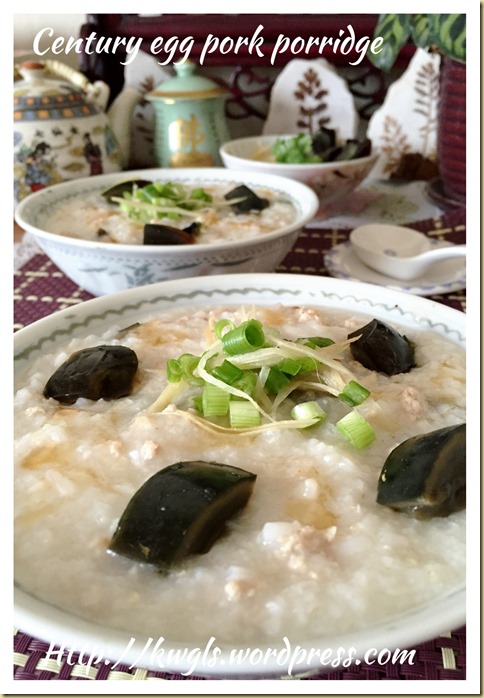
![food bloggers[4] food bloggers[4]](https://kwgls.files.wordpress.com/2015/08/food-bloggers4.jpg?w=484&h=182)
![Food paradize[8] Food paradize[8]](https://kwgls.files.wordpress.com/2015/08/food-paradize8.jpg?w=484&h=175)
![pinterest[4] pinterest[4]](https://kwgls.files.wordpress.com/2015/08/pinterest4.jpg?w=484&h=117)
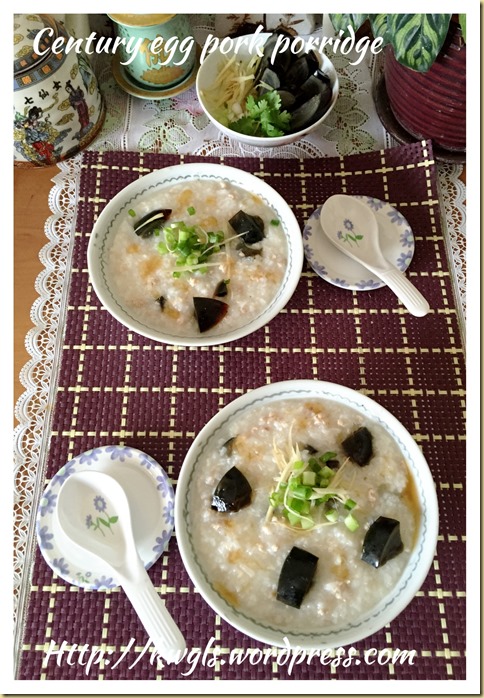
I love how the translated names of our local cuisine always freak out the foreigners. I haven’t always been a fan of 皮蛋 but I’ve definitely learned to love it. Definitely an acquired taste 😛
Is there a need to learn to like? haha.. The century egg are optional. you can use any other thing to change the recipe but just do not called this name. Haha
Mmm you’re right! I actually don’t know if the century egg has any nutritional benefits at all?!